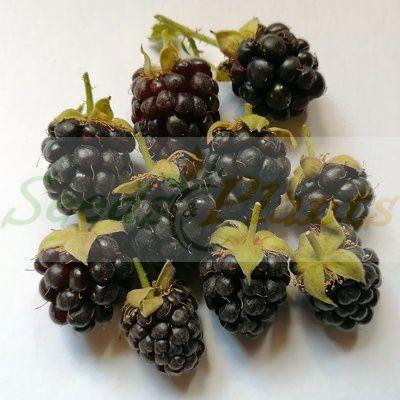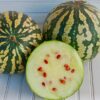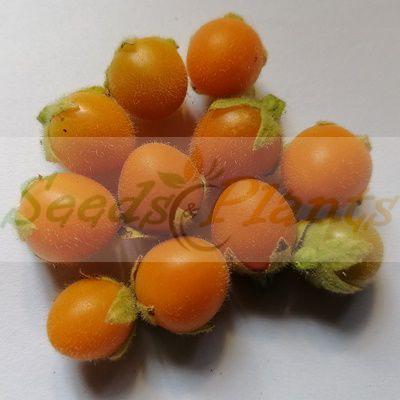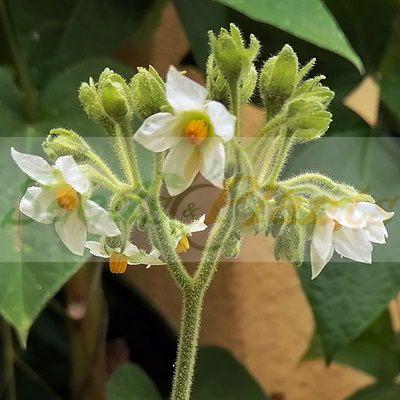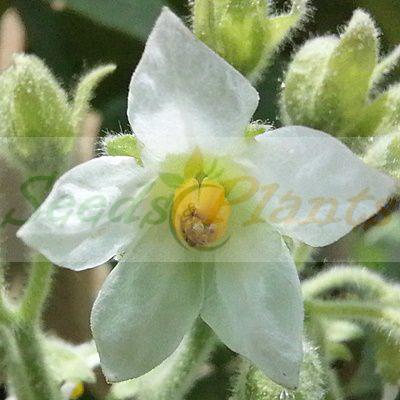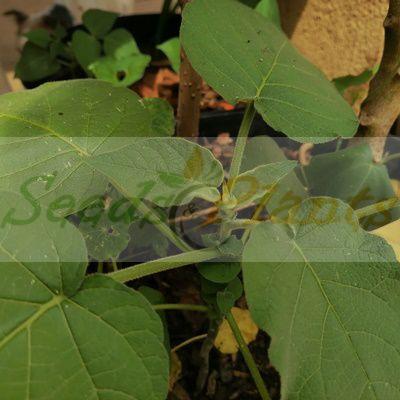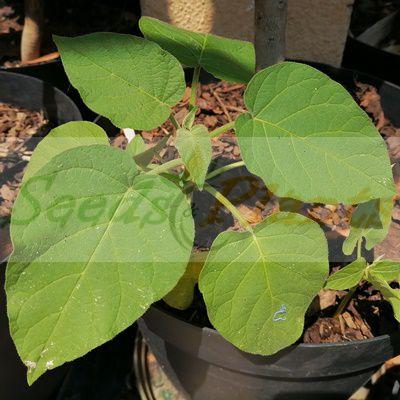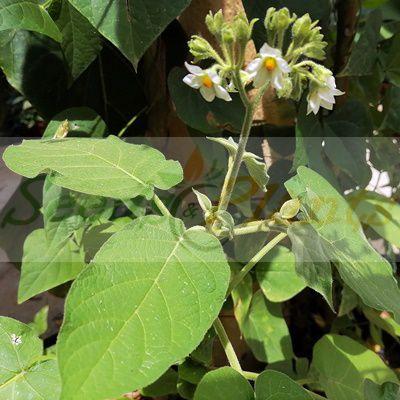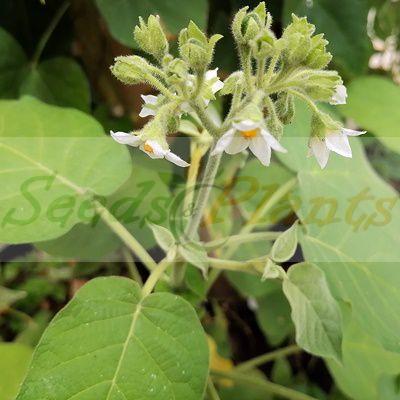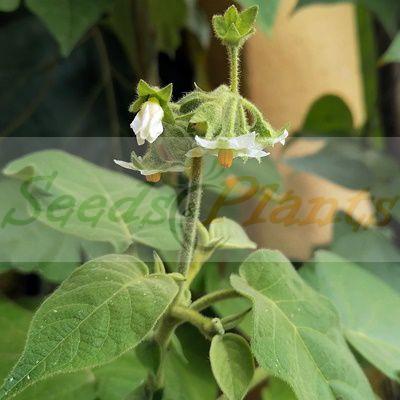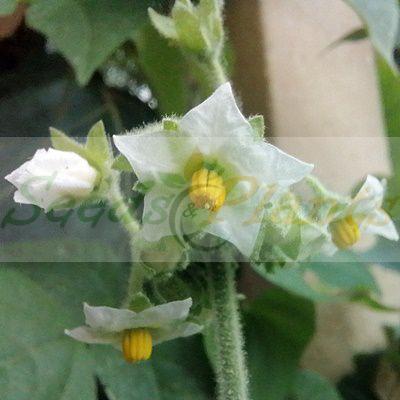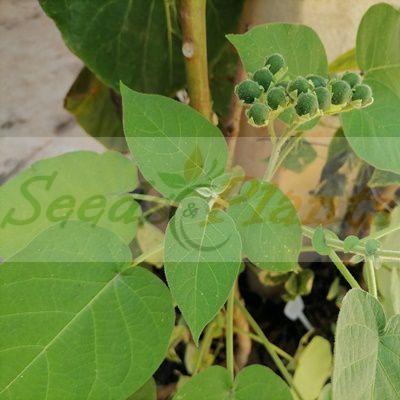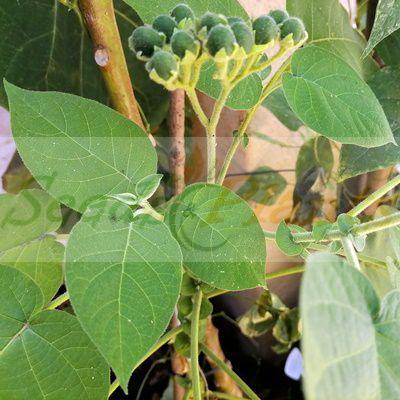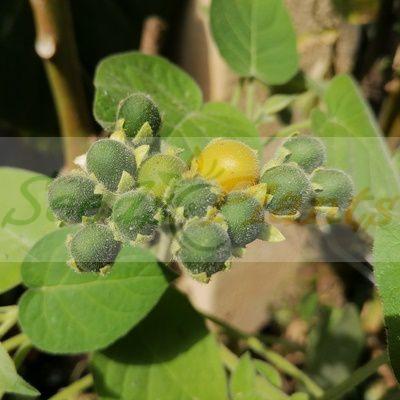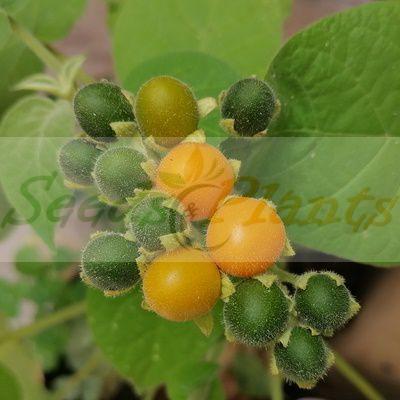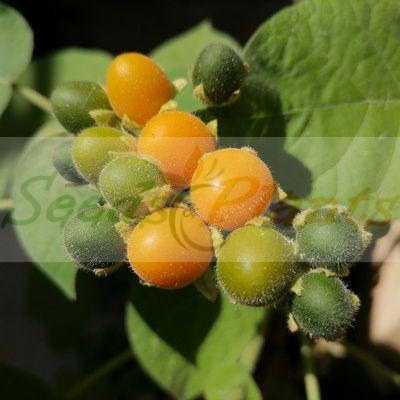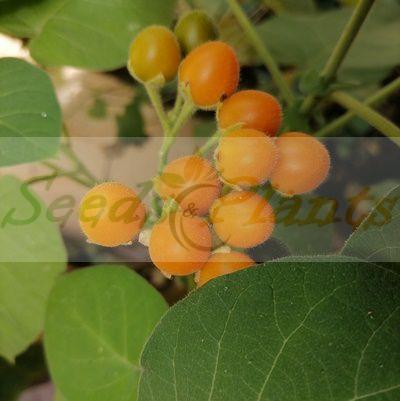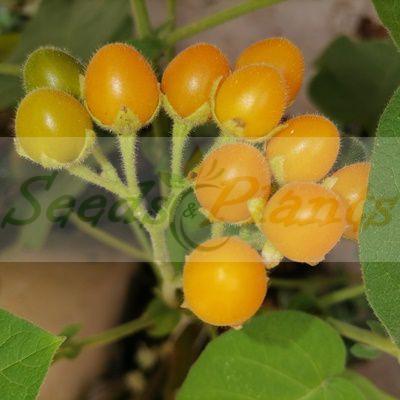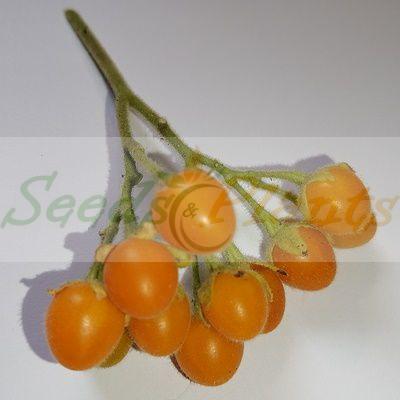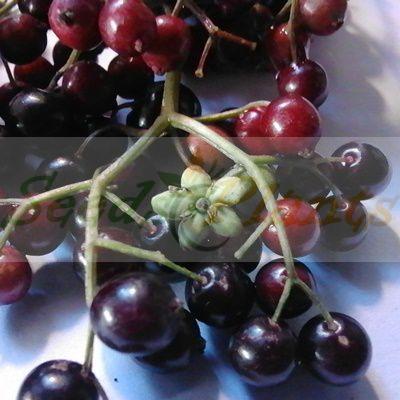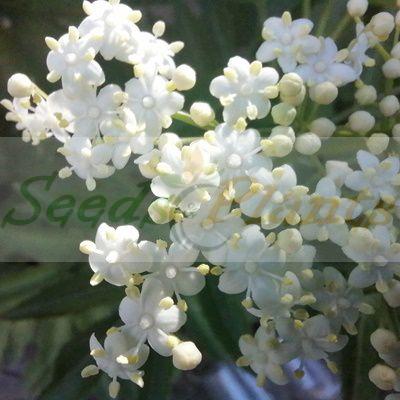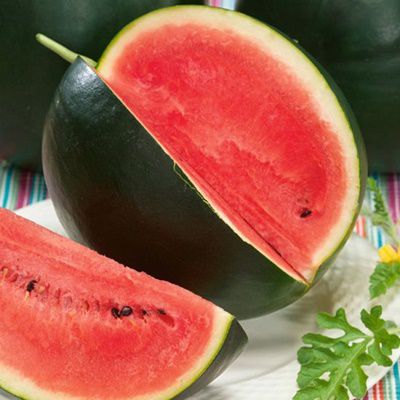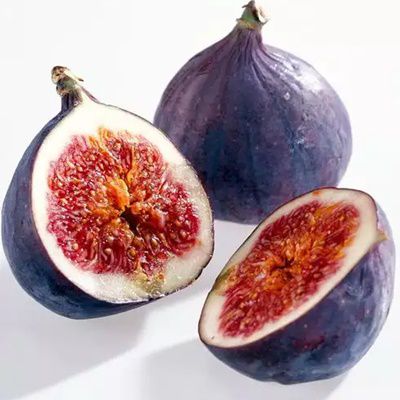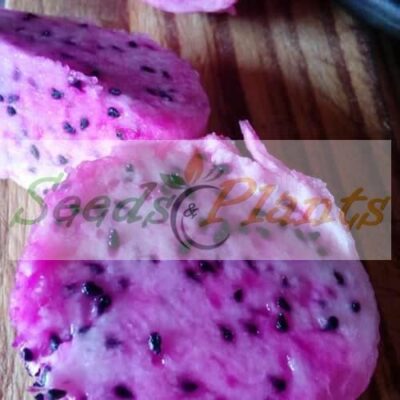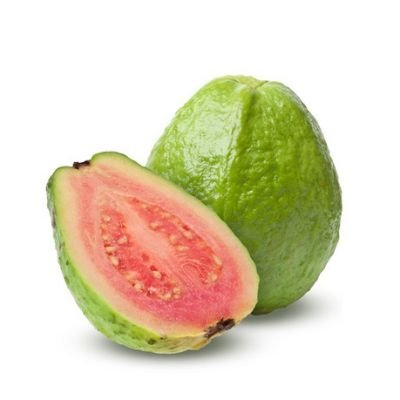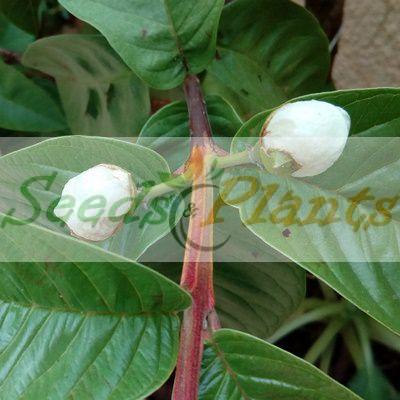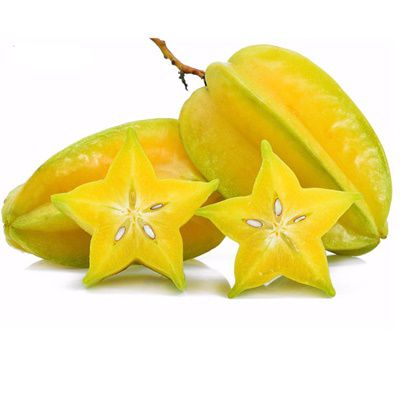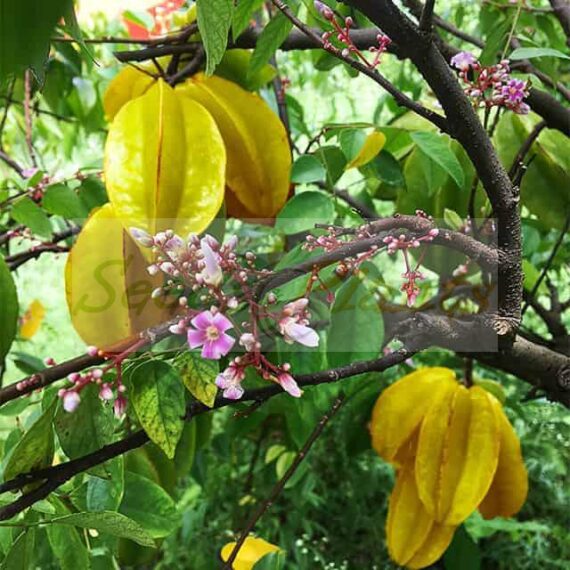🍒 Fruit Quick Facts
Fruit Info
- 🌍 Origin / Region: South America
- 🍽️ Culinary Use: Chutneys, Curries, Desserts, Jams and Jellies, Juices and Syrups, Raw Eating, Salsas
- 🥗 Edible Part: Fruit
- 😋 Flavor Profile: Sweet-tart
Growth Traits
- 🌱 Life Cycle: Perennial
- 🌾 Plant Type: Tree
- 🔁 Fruiting Needs: Needs Only 1 Plant
- 🪴 Growth Habit: Slow Growing, Upright
- 🌸 Flower Color: White
- 🌿 Foliage Type: Evergreen
- 📏 Mature Height: 0.6-3m
- 🦋 Pollinator Method: Attracts Bees, Wind
Growing Requirements
- 🌞 Sun Exposure: Full Sun, Partial Shade
- 💧 Water Needs: Regular Water, Water Deeply
- ☀️ Growing Conditions: Frost Sensitive, Low Cold Tolerance, Moderate Heat Tolerance, Not Drought Tolerant
- 🟤 Soil Preference: Deep, Fertile, Light, Rich Organic, Well-Drained
Dwarf Tamarillo – 20 Seeds
(Cyphomandra abutiloides)
R50.00
It is a rare species of plant in the family Solanaceae, native to South America. Very sweet, fruity, tropical flavor, with overtones of pineapple.
Seed Type: Organic – Harvested from our own plants.
Indoor Sowing: Spring.
Direct Sowing: Not Recommended.
Only 4 left in stock
🍒 Fruit Quick Facts
Fruit Info
- 🌍 Origin / Region: South America
- 🍽️ Culinary Use: Chutneys, Curries, Desserts, Jams and Jellies, Juices and Syrups, Raw Eating, Salsas
- 🥗 Edible Part: Fruit
- 😋 Flavor Profile: Sweet-tart
Growth Traits
- 🌱 Life Cycle: Perennial
- 🌾 Plant Type: Tree
- 🔁 Fruiting Needs: Needs Only 1 Plant
- 🪴 Growth Habit: Slow Growing, Upright
- 🌸 Flower Color: White
- 🌿 Foliage Type: Evergreen
- 📏 Mature Height: 0.6-3m
- 🦋 Pollinator Method: Attracts Bees, Wind
Growing Requirements
- 🌞 Sun Exposure: Full Sun, Partial Shade
- 💧 Water Needs: Regular Water, Water Deeply
- ☀️ Growing Conditions: Frost Sensitive, Low Cold Tolerance, Moderate Heat Tolerance, Not Drought Tolerant
- 🟤 Soil Preference: Deep, Fertile, Light, Rich Organic, Well-Drained
Dwarf Tamarillo (Cyphomandra abutiloides) is a rare species of plant in the family Solanaceae, native to South America. It is known as Dwarf Tamarillo, due to superficial similarities with Solanum betaceum. This miniature version of the regular Tamarillo, and a close relative, bears smaller fruit in clusters. When fully ripe, each fruit is a deep golden-orange. The berries are around 1 cm (or slightly larger) in diameter. Very sweet, fruity, tropical flavor, with overtones of pineapple.
It is a perennial plant that grows well if you live in a moderate, frost free climate or if you overwinter them in pots. A lot of patience is required, as the plant is initially very slow growing and after 3 years matures into a small tree of about 60cm – 90cm in height. By the 4th year the plant reaches a height of about 1.2m if grown in a container. It can reach heights of 1.8 to 3 meters if planted directly in the garden. Since the plant only forms a few leaves during the first 1 – 2 years, it is advisable to grow the plant in it’s own container, so as to not confuse the plant for a weed or some other plant.
Once the plant is about 3 years old, small white flowers form on branches throughout the plant, and individual clusters of flowers can contain as many as 20 blooms or more. Blooms are followed by fruits – a small oblong berry that ripens to a yellow-orange color.
Growing Dwarf Tamarillo
Indoor Sowing: Spring.
Direct Sowing: Not Recommended.
- Start seeds indoors. Direct sowing is not recommended as the seeds are very small.
- Use a standard potting mix that is well drained. Start seeds in containers approximately 8 weeks prior to the planned set-out date.
- Surface sow the seeds and cover with a thin layer of soil.
- Water carefully from the bottom or by using a spray bottle. Water when the soil surface just begins to dry.
- Multiple seeds can be planted in a single starter container, but should be thinned once seedlings appear so only a single plant remains.
- Seeds do not require light for germination but some light source should be provided for seedlings once they emerge from the soil.
- Great for containers.
- Grow in full to filtered sun.
- Water regularly during growth season.
- Use well-drained soil.
Disclaimer
Medicinal Information:
All medicinal information on this website is for educational and informational purposes only and may not be construed as medical advice. The information is not intended to replace medical advice or treatment offered by healthcare professionals.
Seeds, Plants, Plant Cuttings, Geophytes and Dried Herbs:
In some countries and provinces, certain plants are deemed as invasive and are not allowed to be planted at all, whilst some plants are allowed to be grown only in certain areas or provinces. The onus is on you as the buyer to familiarize yourself with the regulations pertaining to your location, before purchasing any of our seeds, plants, plant cuttings, geophytes or dried herbs. We will not be held liable, should you purchase any seeds, plants, plant cuttings, geophytes or dried herbs. from us which are prohibited in your country or province.

